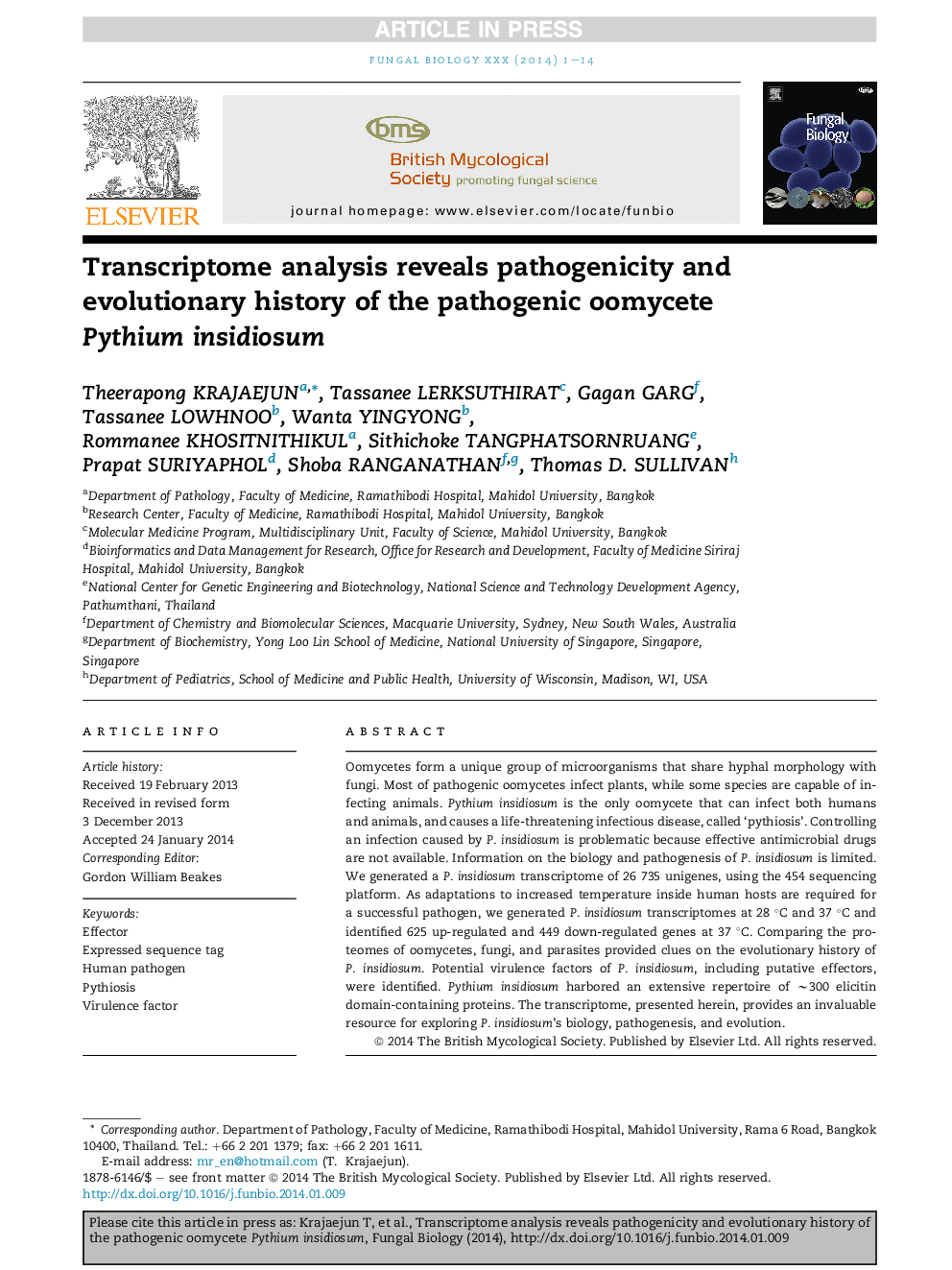| Article ID | Journal | Published Year | Pages | File Type |
|---|---|---|---|---|
| 6287953 | Fungal Biology | 2014 | 14 Pages |
Abstract
Oomycetes form a unique group of microorganisms that share hyphal morphology with fungi. Most of pathogenic oomycetes infect plants, while some species are capable of infecting animals. Pythium insidiosum is the only oomycete that can infect both humans and animals, and causes a life-threatening infectious disease, called 'pythiosis'. Controlling an infection caused by P. insidiosum is problematic because effective antimicrobial drugs are not available. Information on the biology and pathogenesis of P. insidiosum is limited. We generated a P. insidiosum transcriptome of 26 735 unigenes, using the 454 sequencing platform. As adaptations to increased temperature inside human hosts are required for a successful pathogen, we generated P. insidiosum transcriptomes at 28 °C and 37 °C and identified 625 up-regulated and 449 down-regulated genes at 37 °C. Comparing the proteomes of oomycetes, fungi, and parasites provided clues on the evolutionary history of P. insidiosum. Potential virulence factors of P. insidiosum, including putative effectors, were identified. Pythium insidiosum harbored an extensive repertoire of â¼300 elicitin domain-containing proteins. The transcriptome, presented herein, provides an invaluable resource for exploring P. insidiosum's biology, pathogenesis, and evolution.
Related Topics
Life Sciences
Agricultural and Biological Sciences
Agricultural and Biological Sciences (General)
Authors
Theerapong Krajaejun, Tassanee Lerksuthirat, Gagan Garg, Tassanee Lowhnoo, Wanta Yingyong, Rommanee Khositnithikul, Sithichoke Tangphatsornruang, Prapat Suriyaphol, Shoba Ranganathan, Thomas D. Sullivan,
